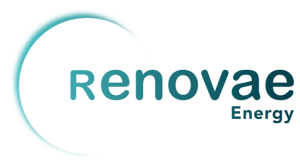
Renovae Energy
Be part of us
Can we help you?
+34 964 042 084

+34 964 042 084
We use our own and third-party cookies to operate this website; these cookies do not collect personal or identifiable information about our users. If you'd like to learn more, please see our cookie policy.
OkWe may request cookies to be set on your device. We use cookies to let us know when you visit our websites, how you interact with us, to enrich your user experience, and to customize your relationship with our website.
Click on the different category headings to find out more. You can also change some of your preferences. Note that blocking some types of cookies may impact your experience on our websites and the services we are able to offer.
These cookies are strictly necessary to provide you with services available through our website and to use some of its features.
Because these cookies are strictly necessary to deliver the website, refusing them will have impact how our site functions. You always can block or delete cookies by changing your browser settings and force blocking all cookies on this website. But this will always prompt you to accept/refuse cookies when revisiting our site.
We fully respect if you want to refuse cookies but to avoid asking you again and again kindly allow us to store a cookie for that. You are free to opt out any time or opt in for other cookies to get a better experience. If you refuse cookies we will remove all set cookies in our domain.
We provide you with a list of stored cookies on your computer in our domain so you can check what we stored. Due to security reasons we are not able to show or modify cookies from other domains. You can check these in your browser security settings.
We also use different external services like Google Webfonts, Google Maps, and external Video providers. Since these providers may collect personal data like your IP address we allow you to block them here. Please be aware that this might heavily reduce the functionality and appearance of our site. Changes will take effect once you reload the page.
Google Webfont Settings:
Google Map Settings:
Google reCaptcha Settings:
Vimeo and Youtube video embeds:
You can read about our cookies and privacy settings in detail on our Privacy Policy Page.
Privacy policy
What Factors Affect the Cost of a Solar Installation?
/in NewsWhat Factors Affect the Cost of a Solar Installation?
One of the most common questions we get at RenovaEnergy is: Why does the price of a solar installation vary so much? The truth is, there’s no single price tag—every system is custom-designed. In this guide, we explain the main cost drivers and how to know if you’re getting a fair deal.
Key Factors That Influence the Final Cost
How Much Does Solar Cost in 2025?
Prices have dropped in recent years, but depend heavily on system size and extras:
What Should a Complete Quote Include?
At RenovaEnergy, our quotes are always turnkey and transparent. They include:
How to Know If You’re Getting a Good Deal
The cheapest offer isn’t always the best. What matters is quality, guarantees, and long-term return. RenovaEnergy helps you understand what you’re paying for and why.
Wondering how much your system should cost? Request a free quote from us and we’ll guide you without obligation.
How to Charge an Electric Car with Solar Panels
/in NewsHow to Charge an Electric Car with Solar Panels
Pairing an electric vehicle with solar energy is one of the smartest moves you can make in 2025. At RenovaEnergy, we explain how to charge your EV at home using solar panels—saving money and reducing your environmental impact with clean energy from your own rooftop.
Can you charge an EV using only solar panels?
Yes, absolutely. The key is knowing how much energy you generate, when you produce it, and how to schedule your charging. It’s all about designing a system that matches your usage and adapting your routine.
What do you need to charge an EV with solar?
How many panels are needed to charge an EV?
It depends on the car model and how much you drive. As a general reference:
How much can you save?
If you charge with solar energy, your cost per kilometer is virtually zero. Compared to a gas car, you can save over €1,000 per year on fuel alone—plus lower maintenance costs.
What if I don’t have a solar battery?
That’s fine. You can schedule your charging during daylight hours. With a good excess energy compensation rate, you’ll still save significantly.
RenovaEnergy helps you integrate solar and EV charging
We design solar installations with electric mobility in mind. We help you size your system, install your charger, and configure everything to maximize solar production and self-consumption.
Thinking of going electric or already have an EV? Let RenovaEnergy help you power it with the sun.
Best Solar Self-Consumption Tariff in 2025: How to Choose
/in NewsThe Best Solar Self-Consumption Tariff in 2025
If you already have solar panels or are planning to install them, there’s one essential question: Which electricity tariff gives you the most savings? At RenovaEnergy, we guide you through finding the best plan to make your solar installation even more profitable.
What should a good solar tariff include?
Not all energy plans are designed for solar users. A good self-consumption tariff should:
How does surplus compensation work?
With simplified compensation, the value of unused solar energy is deducted from your electricity bill. But rates vary by provider, and some set limits on monthly credits.
Should I choose a fixed, variable, or time-of-use tariff?
If you have a solar battery, TOU tariffs can help you charge when energy is cheapest and use it when rates are high.
Common mistakes to avoid
Still don’t have solar panels?
We’ve got you covered. At RenovaEnergy, we design your solar system and recommend the best tariff to match it, so you save from day one.
Need help choosing the best solar plan?
RenovaEnergy analyzes your consumption, solar production, and the current energy market to propose the best self-consumption tariff for your home in 2025.
Want a free customized comparison? Contact us with no obligation.
How to Calculate the Profitability of a Solar Installation
/in NewsHow to Calculate the Profitability of a Solar Installation in 2025
One of the first questions people ask when considering solar is: Is it really worth it? At RenovaEnergy, we help you calculate the profitability of your solar system so you can make an informed decision, backed by real data based on your energy habits.
What factors affect profitability?
Solar profitability varies depending on key variables such as:
Basic formula to estimate profitability
A simple formula to begin with is:
Annual ROI (%) = (Annual savings / Total investment) x 100
For example, if you invest €6,000 and save €700 a year:
What’s considered a good return?
Anything above 10% annual ROI is excellent. Plus, solar energy is a stable, predictable long-term investment.
How to increase profitability
RenovaEnergy helps you calculate your real numbers
You don’t need to do complex math. RenovaEnergy calculates your system’s real profitability based on your consumption habits, location, and energy goals. You’ll know exactly how much you’ll save and how long it takes to recover your investment.
Want to know if solar is a smart choice for you in 2025? We’ll help you with no strings attached.
How Much Energy Do Solar Panels Produce on Cloudy Days?
/in NewsHow Much Energy Do Solar Panels Produce on Cloudy Days?
One of the most frequent questions we hear from future solar users is: Do solar panels work when the sky is cloudy? At RenovaEnergy, we explain how cloud cover affects solar performance and why solar power is still efficient even without direct sunlight.
Do solar panels work on cloudy days?
Yes. While their output is lower, solar panels continue generating electricity thanks to diffused sunlight—light that passes through the clouds.
How much does production decrease?
The loss of performance depends on how dense the clouds are. In general:
Do all panels perform the same in cloudy weather?
No. Some panels, such as monocrystalline models, are more efficient in low-light conditions. The inverter and monitoring systems also play a key role in maximizing performance.
How does this affect savings?
If you live in an area with frequent cloudy days, your annual production might drop slightly. But in most parts of Spain, the impact is minimal and annual output remains high enough to ensure profitability.
What if I have a solar battery?
Batteries help stabilize your energy use. You can store excess electricity from sunny days and use it when production drops due to weather.
Bottom line? Clouds aren’t a problem
Solar panels don’t need direct sun to work. While performance may decrease on cloudy days, they still generate valuable electricity. A properly designed system will account for this and ensure reliable output year-round.
Curious if your location is a good fit for solar? RenovaEnergy will assess your site, consumption habits, and sun exposure to give you a clear answer.
Solar Panel Maintenance in 2025: What You Need to Know
/in NewsWhat Maintenance Do Solar Panels Need in 2025?
One of the biggest advantages of solar energy is that it requires very little maintenance. But that doesn’t mean you can completely forget about your system. At RenovaEnergy, we explain what your solar panels need in 2025 to keep operating at peak efficiency for decades.
How often should solar panels be checked?
We recommend at least one professional check-up per year to inspect the system, spot any issues, and ensure optimal performance.
Recommended basic maintenance
Do I need a professional for this?
You can handle basic cleaning if you have safe access, but RenovaEnergy always recommends that at least one annual review be done by a qualified technician to guarantee safety and long-term efficiency.
What happens if I skip maintenance?
Without maintenance, a solar system can gradually lose performance. Accumulated dirt, faulty inverters, or loose cables can reduce your production by up to 15%.
How much does solar panel maintenance cost?
It depends on the system size and type of service, but here are some reference prices:
Does RenovaEnergy offer maintenance?
Yes. We offer custom maintenance plans for homeowners and larger solar systems alike. Whether or not your system was installed by us, we’ll help you keep it running like new.
Not sure if your system is working at full capacity? Contact RenovaEnergy and we’ll help you get the most out of your solar power.